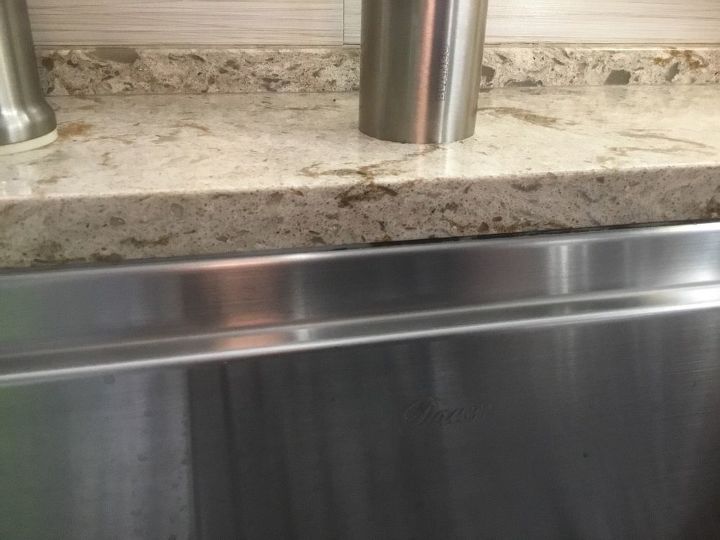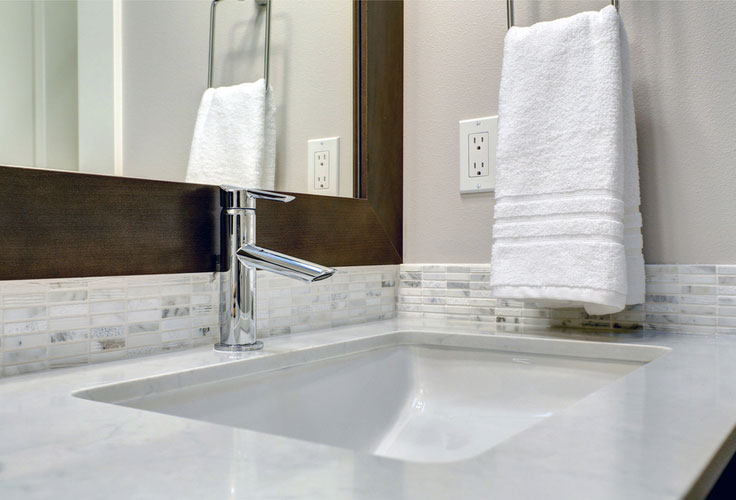Are you wondering whether you should caulk around your stainless steel sink? This is a common question that many homeowners have, and the answer is yes! Caulking around a kitchen sink is not only a good idea, but it is also necessary to prevent water damage and create a finished look. Let’s dive into the reasons why caulking is important for your stainless steel sink.

Credit: homemembership.com

Credit: www.reddit.com
Prevent Water Damage
Caulking around your sink helps to prevent water from seeping down into the cabinet below. Over time, water leakage can cause damage to the cabinet, leading to mold growth and structural issues. By applying caulk, you create a watertight seal that keeps water where it belongs – in the sink.
Create a Finished Look
Another reason to caulk around your stainless steel sink is to create a cleaner and more finished appearance. The caulk fills in the gap between the sink and the countertop, giving it a seamless and cohesive look. This small detail can make a big difference in the overall aesthetics of your kitchen.
The Best Caulk for Stainless Steel Sinks
When choosing a caulk for your stainless steel sink, it’s important to select one that is flexible and long-lasting. Silicone sealant is the best option for stainless steel sinks as it can withstand the movement that these sinks are prone to without cracking. Look for a high-quality silicone sealant that has good adhesion to stainless steel, aluminum, glass, and other building materials.
How to Caulk a Stainless Steel Sink
Caulking a stainless steel sink is a relatively simple process. Here’s a step-by-step guide:
- Clean the area: Start by cleaning the gap between the sink and the countertop to remove any dirt or old caulk.
- Apply painter’s tape: Place painter’s tape along the edges of the sink to protect the countertop from excess caulk.
- Prepare the caulk: Cut the tip of the caulk tube at a 45-degree angle and load it into a caulk gun.
- Apply the caulk: Starting from one end, apply a thin and even bead of caulk along the gap between the sink and the countertop.
- Smooth out the caulk: Use your finger or a caulk smoothing tool to smooth out the caulk and create a seamless finish.
- Remove the tape: Gently remove the painter’s tape before the caulk dries to ensure clean lines.
Frequently Asked Questions For Should You Caulk Around Stainless Steel Sink?
Should A Stainless Steel Sink Be Sealed?
Yes, caulking around a stainless steel sink is recommended. It helps prevent water damage and creates a cleaner look. Use a durable silicone sealant that can accommodate the sink’s movement without cracking.
Are You Supposed To Caulk Around A Sink?
Yes, caulking around a sink is recommended. It helps prevent water damage by creating a barrier that keeps water from seeping into the cabinet below the sink. Additionally, caulking enhances the appearance of the sink area, giving it a cleaner and more finished look.
What Is The Best Sealant For A Stainless Steel Sink?
Yes, the best sealant for a stainless steel sink is a durable and long-lasting silicone sealant. Silicone has enough flexibility to compensate for any movement in the sink without cracking.
Does Silicone Stick To Stainless Steel Sink?
Yes, silicone does stick to a stainless steel sink. It is a one component, neutral room temperature cure silicone sealant that has good adhesion to stainless steel and other building materials. Caulking around a stainless steel sink is a good idea to prevent water damage and create a cleaner look.
Conclusion
In conclusion, caulking around your stainless steel sink is essential to prevent water damage and create a polished look. Make sure to choose a high-quality silicone sealant that is flexible and long-lasting for the best results. By following the steps mentioned above, you can achieve a professional-looking caulking job. Don’t neglect this important step in maintaining the integrity of your kitchen sink!





Leave a Reply